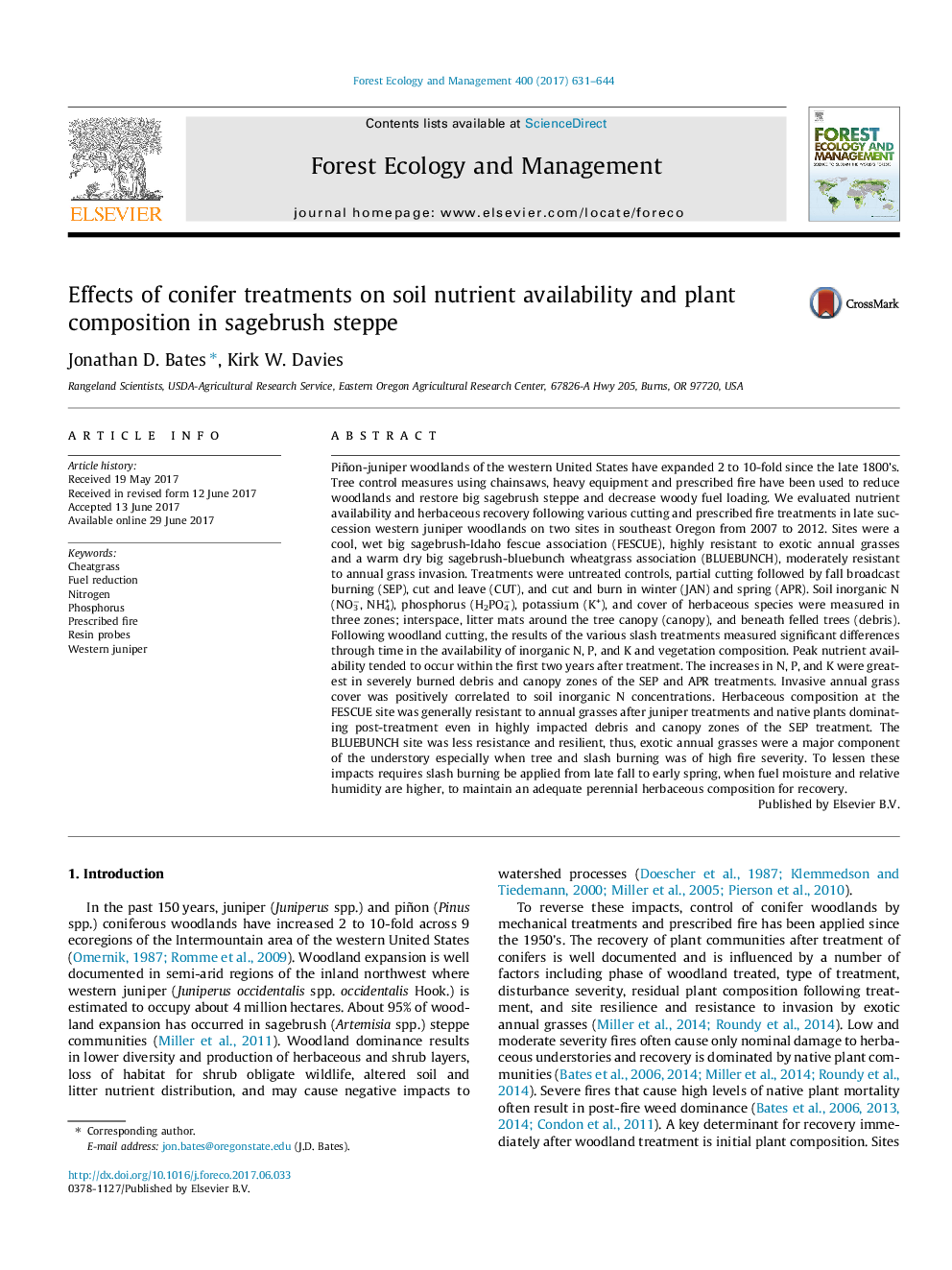| Article ID | Journal | Published Year | Pages | File Type |
|---|---|---|---|---|
| 6459314 | Forest Ecology and Management | 2017 | 14 Pages |
â¢Inorganic soil N, P, and K increased in after juniper control and burning slash.â¢Increases in N, P, and K were greatest in severely burned slash and litter zones.â¢Native perennials were dominant at the big sagebrush/Idaho fescue association.â¢Perennials and annual grass co-dominated the sagebrush/bluebunch wheatgrass association.â¢Invasive annual cover was positively correlated to soil inorganic N concentration.
Piñon-juniper woodlands of the western United States have expanded 2 to 10-fold since the late 1800's. Tree control measures using chainsaws, heavy equipment and prescribed fire have been used to reduce woodlands and restore big sagebrush steppe and decrease woody fuel loading. We evaluated nutrient availability and herbaceous recovery following various cutting and prescribed fire treatments in late succession western juniper woodlands on two sites in southeast Oregon from 2007 to 2012. Sites were a cool, wet big sagebrush-Idaho fescue association (FESCUE), highly resistant to exotic annual grasses and a warm dry big sagebrush-bluebunch wheatgrass association (BLUEBUNCH), moderately resistant to annual grass invasion. Treatments were untreated controls, partial cutting followed by fall broadcast burning (SEP), cut and leave (CUT), and cut and burn in winter (JAN) and spring (APR). Soil inorganic N (NO3â, NH4+), phosphorus (H2PO4â), potassium (K+), and cover of herbaceous species were measured in three zones; interspace, litter mats around the tree canopy (canopy), and beneath felled trees (debris). Following woodland cutting, the results of the various slash treatments measured significant differences through time in the availability of inorganic N, P, and K and vegetation composition. Peak nutrient availability tended to occur within the first two years after treatment. The increases in N, P, and K were greatest in severely burned debris and canopy zones of the SEP and APR treatments. Invasive annual grass cover was positively correlated to soil inorganic N concentrations. Herbaceous composition at the FESCUE site was generally resistant to annual grasses after juniper treatments and native plants dominating post-treatment even in highly impacted debris and canopy zones of the SEP treatment. The BLUEBUNCH site was less resistance and resilient, thus, exotic annual grasses were a major component of the understory especially when tree and slash burning was of high fire severity. To lessen these impacts requires slash burning be applied from late fall to early spring, when fuel moisture and relative humidity are higher, to maintain an adequate perennial herbaceous composition for recovery.
